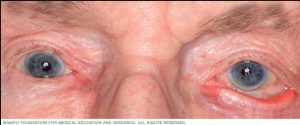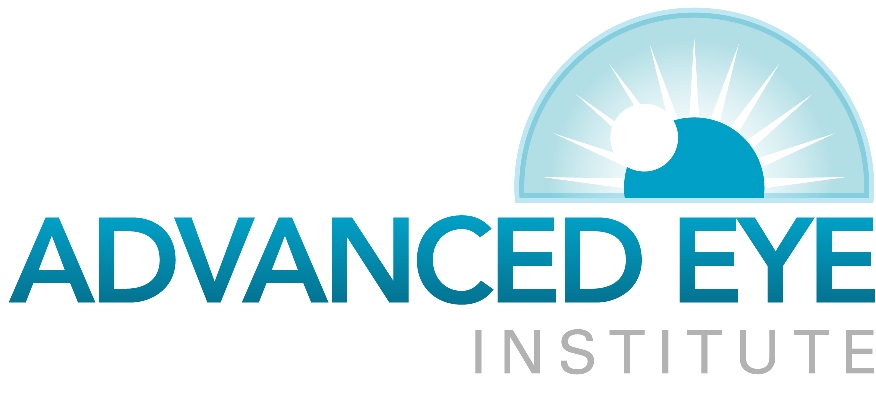Ectropion & Entropion
Total eye health includes having healthy eyes and healthy eyelids. Common eyelid problems can include excess eyelid skin (Dermatochalasis) droopy eyelids, or eyelids that turn inward or outward. This can cause eye discomfort and can limit vision, and affect appearance. Fortunately, such eye lid issues can be corrected with surgical procedures.
Ptosis
 Ptosis (pronounced “toe-sis”) is the upper eyelid drooping. Ptosis can either be apparent at birth or it can be something that develops with age. The type of ptosis associated with aging is known as “Involutional ptosis”. It may worsen after other types of eye surgery or eyelid swelling. Ptosis may limit your peripheral or possibly central vision. If ptosis occurs in one eye, it may create an uneven appearance. Surgical shortening of the muscle that opens the eyelid will often lead to better vision and improved appearance.
Ptosis (pronounced “toe-sis”) is the upper eyelid drooping. Ptosis can either be apparent at birth or it can be something that develops with age. The type of ptosis associated with aging is known as “Involutional ptosis”. It may worsen after other types of eye surgery or eyelid swelling. Ptosis may limit your peripheral or possibly central vision. If ptosis occurs in one eye, it may create an uneven appearance. Surgical shortening of the muscle that opens the eyelid will often lead to better vision and improved appearance.
Ectropion Repair
 Stretching of the lower eyelid from aging may cause the eyelid to droop downward and turn outward. This condition is known as “ectropion”. Facial burns or skin disease may also cause this problem. Ectropion can cause dryness of the eyes, excessive tearing, redness and sensitivity to light and wind. Surgery can restore the normal position of the eyelid, improving these symptoms.
Stretching of the lower eyelid from aging may cause the eyelid to droop downward and turn outward. This condition is known as “ectropion”. Facial burns or skin disease may also cause this problem. Ectropion can cause dryness of the eyes, excessive tearing, redness and sensitivity to light and wind. Surgery can restore the normal position of the eyelid, improving these symptoms.
Entropion Repair
 Inward turning of the eyelid is known as “Entropion”. It also occurs most commonly as a result of aging. Infection and scarring inside the eyelid are other common causes of entropion as well. When the eyelid turns inward, the eyelashes and skin rub against the eye surface, making it red, irritated, watery, and sensitive to light and wind. If entropion is not treated, an infection may develop on the clear surface of the eyelid called the cornea. With surgery, the eyelid can be turned back to its normal position, protecting the eye and improving these symptoms.
Inward turning of the eyelid is known as “Entropion”. It also occurs most commonly as a result of aging. Infection and scarring inside the eyelid are other common causes of entropion as well. When the eyelid turns inward, the eyelashes and skin rub against the eye surface, making it red, irritated, watery, and sensitive to light and wind. If entropion is not treated, an infection may develop on the clear surface of the eyelid called the cornea. With surgery, the eyelid can be turned back to its normal position, protecting the eye and improving these symptoms.
Experience You Can See
Thibodaux : 985-446-0506 | Houma : 985-879-2393
